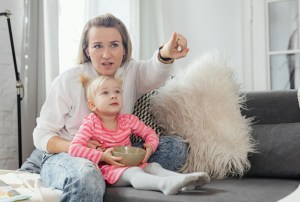
Children are television’s toughest audience, often deciding in one episode or less if a series will hold their attention.
Jane Gould, co-founder of WonderWorks Insights, last week told the Australian Children’s Content Summit creators needed a clear premise from the beginning if they wanted to hold audiences.
“Those decisions are made in split seconds,” she said. “They’re not going to spend a long time looking and wondering. It is about that instant connection. They’re making a choice, and you hope to influence behaviour through those fundamental choices.
“There’s no room for holding back when you’re making content. Hearing that it gets good in Episode Four just isn’t really gonna work.”
The younger the target audience, the more critical is time in decision-making.
“In our work, what we have seen very clearly is that for Preschoolers, it is One Episode or Less. I would focus on the ‘Or.’ It’s definitely less than one episode before they decide whether (it’s for them). They just wander off. They don’t even actively reject it. They just find something else. It’s hard. They’re a tough crowd,” she explained.
“For our 6 to 14s, you’ve got two episodes at most. Probably one and a half in the Adult space.”
As content options increase, that time is also diminishing overall.
“The tolerance is now, ‘I don’t need to wait to see if it’s getting better.’ That puts a lot of emphasis on you as creators and producers to really show up that very first moment in episode for that to be well thought-through and delivered.”
Gould believes there are ‘Timeless’ themes that work in Children’s TV while creators also need a clear premise which can be easily communicated.
“If Word of Mouth is the most important thing, how is a child going to tell another child about your show and say ‘You should watch it because…. I like it, because….’” she explained. “You need to articulate that.”
Wonderworks also researched how kids are feeling emotionally, and drew surprising results that Adults often overlook.
“We went and asked kids how they’re feeling and just kept it really simple. A full spectrum of feelings that we put out there that they were able to choose from,” said Gould.
“They said, ‘I’m Happy’ thanks so much for asking. We’re not Pollyanna-ing how they feel. It’s not that those other feelings aren’t on the table for them being experienced. But if you look at the top four, I’m Happy/ Excited / Hopeful / Relaxed. Mostly these things.
“I think sometimes in our heads, we’ve flipped it that they’re anxious and confused and worry more than the other things. So I’m here to advocate for all of the happiness and excitement and hope and realisation that they feel like they’re having, and making sure that we recognise the other pieces of their emotional spectrum.”
links to content on ABC
TV Tonight





